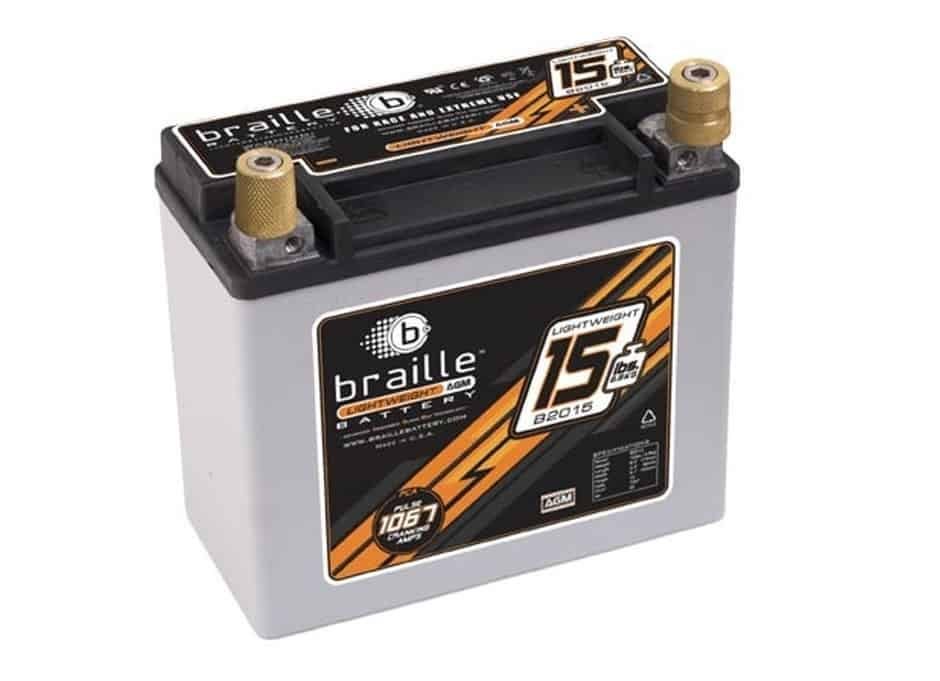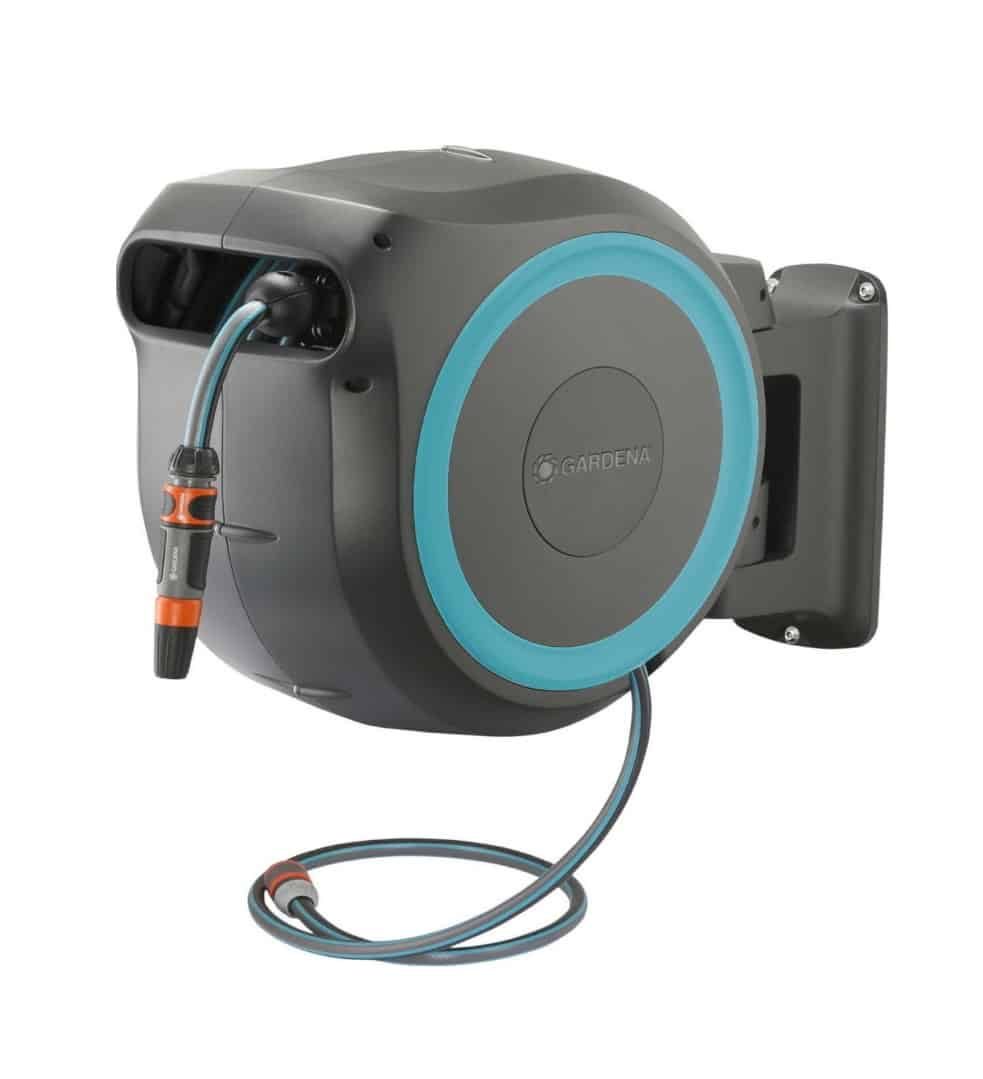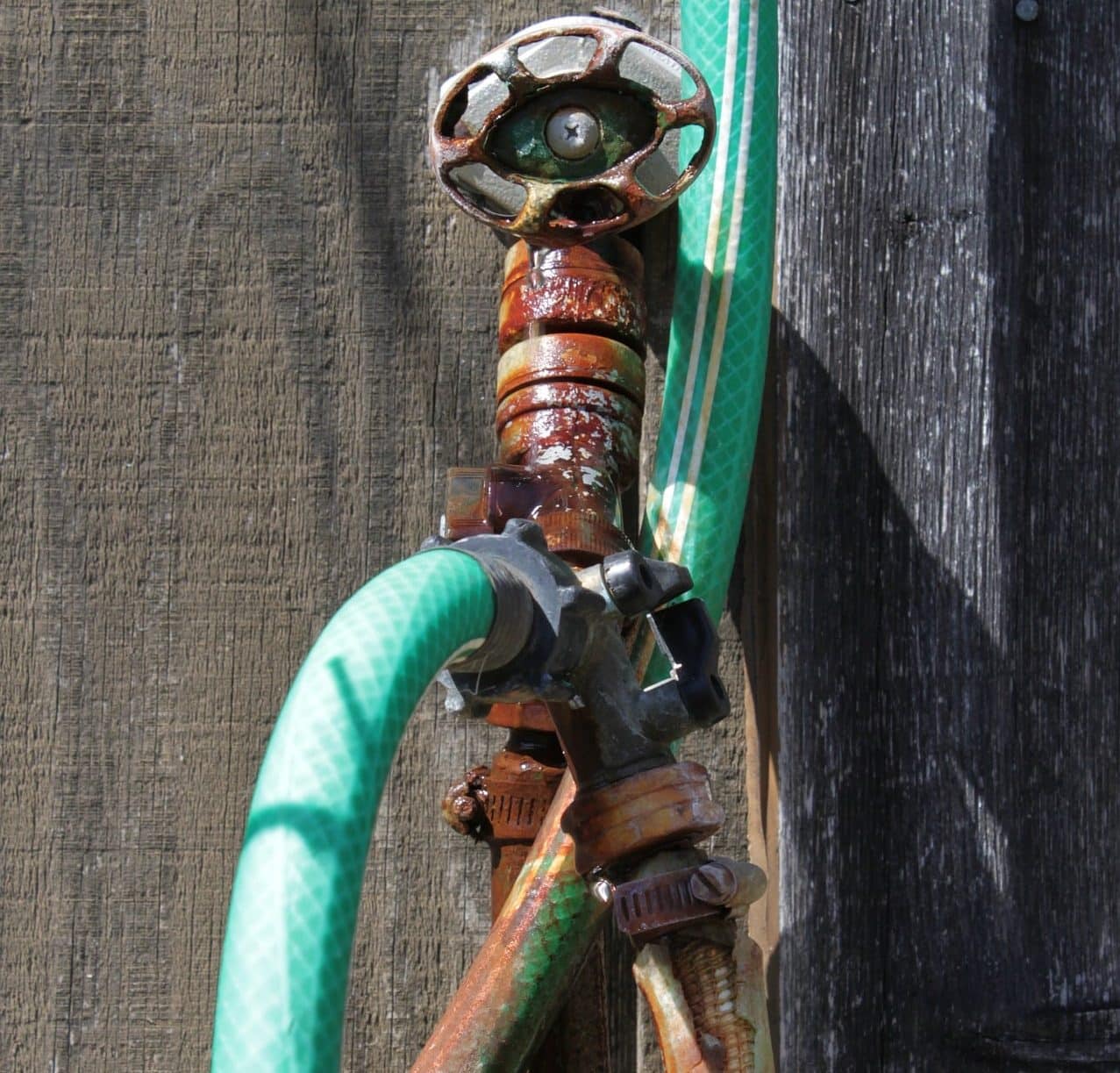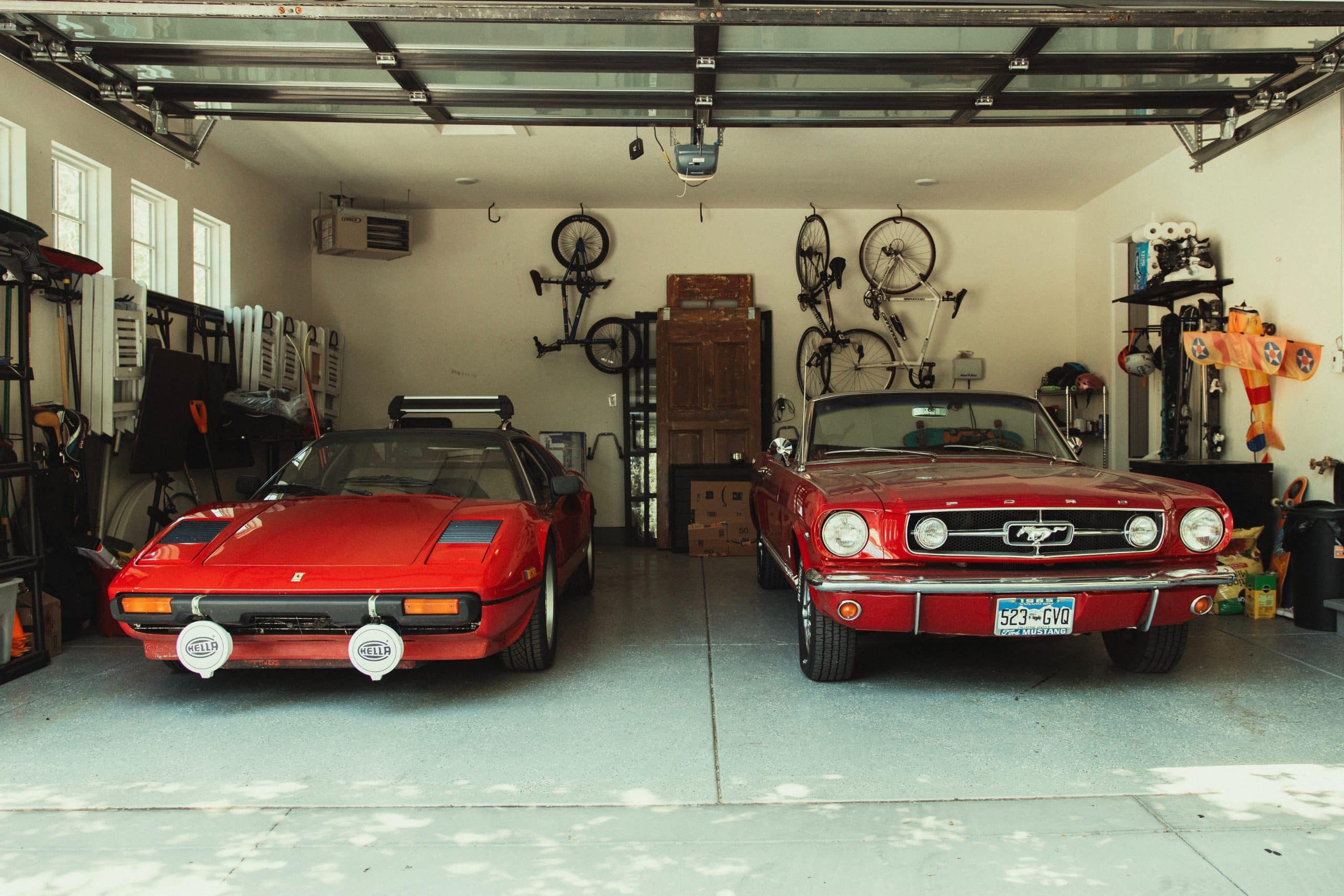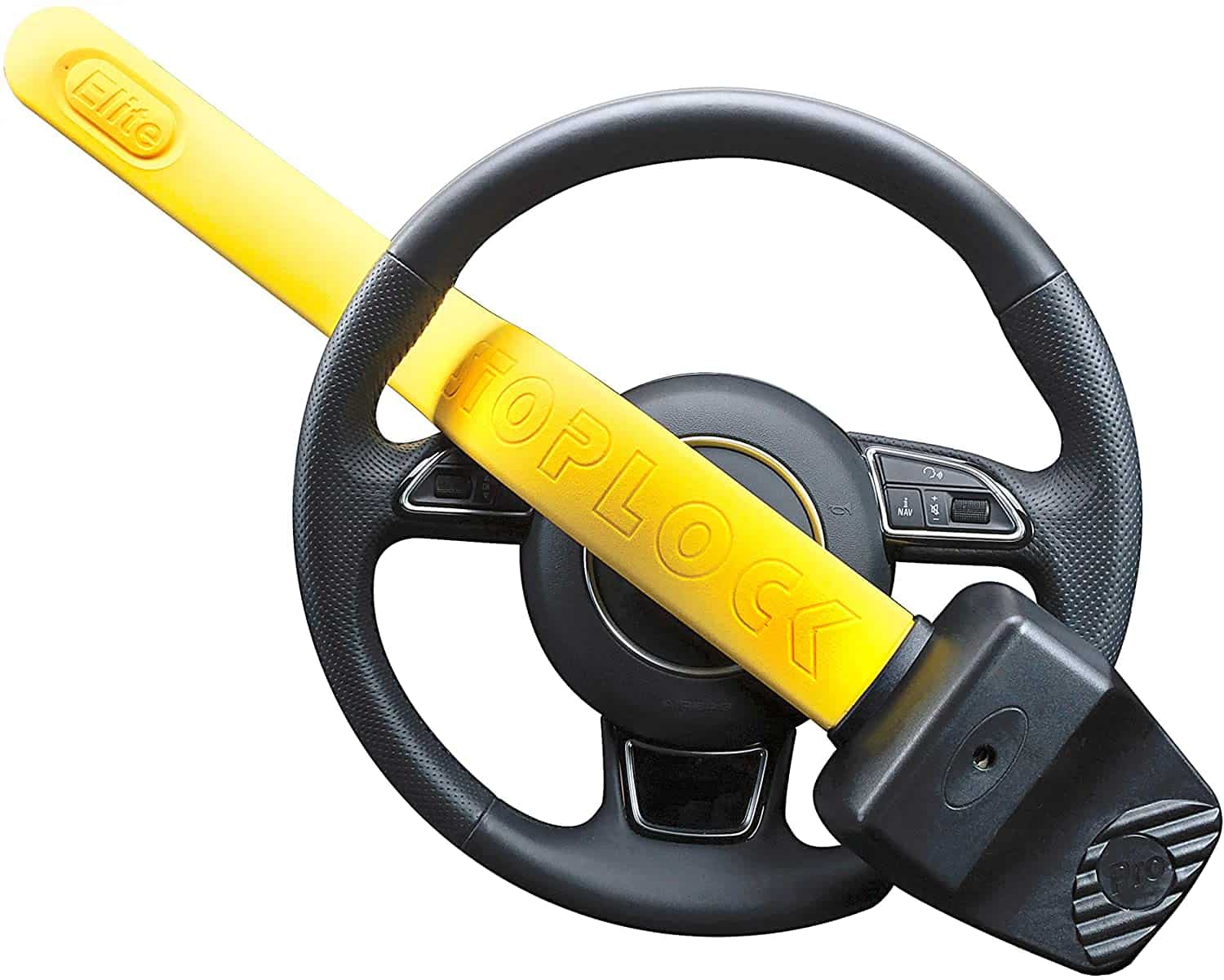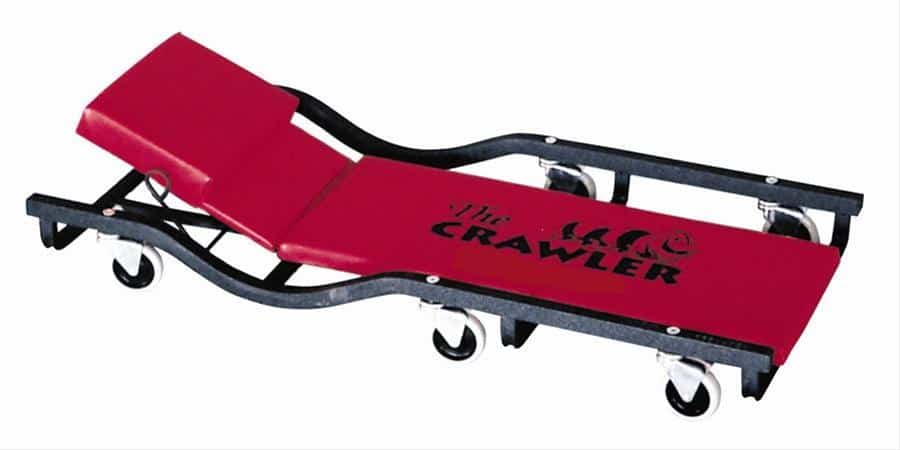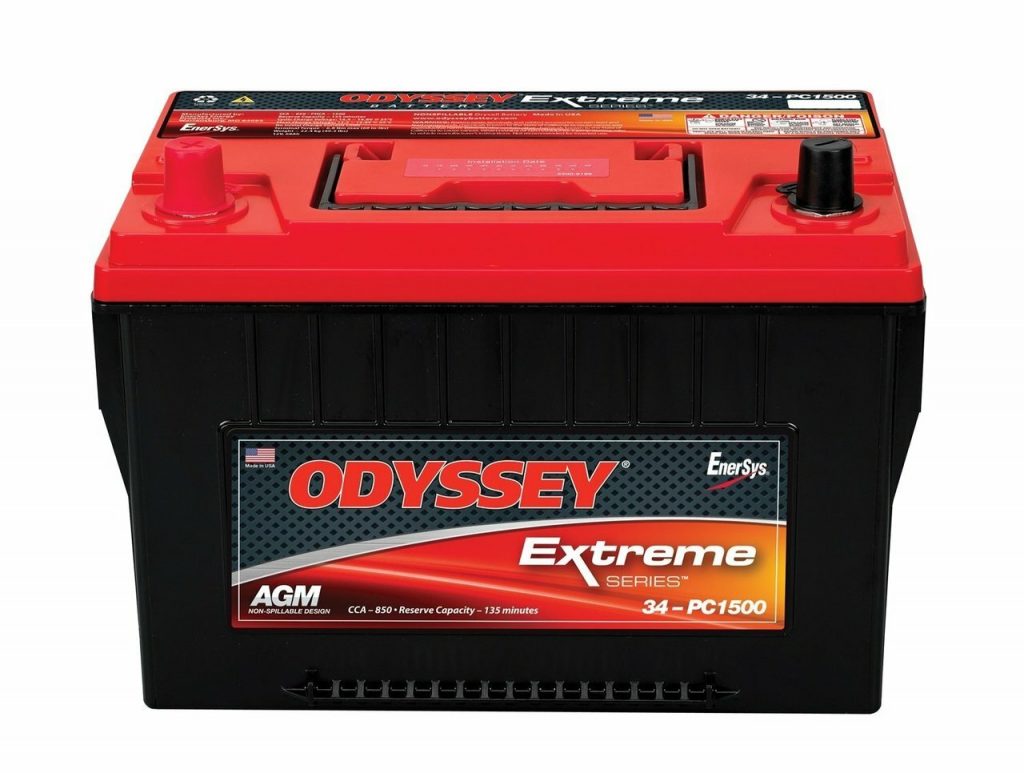
Choosing the right car battery for your vehicle can be confusing, because there’s more to a car battery than meets the eye. At first glance, between different car batteries, it’s just their color, label and size that differ. Looks can be deceiving though…It’s a battery’s internals that make the difference.
In this article, we’ll explain the differences between car battery types, sizes and ratings. This article will enable you to easily choose the right car battery for your vehicle, depending on its use.
These are the car batteries we recommend depending on your requirements:
|
Best Overall
|
|
|
Best Budget
|
|
|
Best Starting
|
|
|
Best Dual Purpose
|
|
|
Best Lightweight
|
Things to Consider when Buying a Car Battery
In the days of old car batteries’ electrolyte (fluid) level needed to be checked regularly and topped up if needed. Modern batteries are sealed and electrolyte levels don’t need to be checked anymore.
However, car battery technology has evolved dramatically since the days you had to top up your battery fluid. When you’re shopping for the best performing car battery for your specific vehicle, a whole range of specifications need to be taken into account if you want the battery to perform optimally and last as long as possible.
These are the things you need to know and consider to be able to make the right choice and get the most bang for your buck:
Different Car Battery Types
Although all modern car batteries are 12V, different battery plate technologies are used inside that plastic container to store and release energy. It’s these different technologies that need to be taken into account when choosing a car battery.
Price difference between technologies not only relates to their popularity (mass production means lower prices) but also to their internal construction and the materials used. This means that it’s not always the most expensive battery that performs best for all uses.
These are the car battery types that you’re most likely to find in your local auto parts store or online:
STD (standard)
Also called “wet” or “flooded” batteries. They are very common lead-acid batteries and most affordable. They consist of lead/antimony plates suspended in liquid acid.
Calcium
A calcium battery is basically a modified lead-acid battery. These batteries can be lead-calcium, lead-calcium-silver or calcium-calcium alloy. They are usually sealed and maintenance-free.
The antimony in the plates is replaced by calcium, often combined with silver. The calcium component gives a lead-acid battery some advantages like improved resistance to corrosion, reduced gassing, less water usage and lower self-discharge. Silver makes the plates more resilient to high temperatures.
Calcium batteries require a higher charge voltage (14,6-14,8V) than conventional batteries (13,8V) to get the maximum life out of the battery. Select AGM-mode on your battery charger if your calcium battery needs to be topped-up or trickle-charged. (check manual first)
If your vehicle’s charging system isn’t optimized for calcium batteries this may shorten the battery’s longevity.
EFB (Enhanced Flooded Battery)
Developed around 2008, these improved flooded lead-acid batteries have similar qualities to AGM batteries. They charge rapidly between starts and are about twice as durable as standard ‘wet’ batteries.
Some European car makers use these as a more cost-effective alternative to an AGM and they’re a great upgrade over a calcium battery.
They perform best for cars with simple automatic start-stop systems, cars without a start-stop system but with demanding driving requirements (e.g. in urban traffic) or for cars without start-stop system but with extensive equipment.
The primary benefits of EFB technology are improved charge acceptance and greater cyclic durability when operating in a reduced state of charge (typical of Stop/Start applications).
As a general rule, EFB batteries can provide twice the number of charging cycles in comparison with conventional (STD) starter batteries.
Though they are widely accepted and rapidly growing in popularity in Europe and Asia, quality EFB batteries are hard to come by in the US.
AGM (Absorbent Glass Mat)
Though more expensive than EFB batteries, Absorbed Glass Mat batteries are the most popular car batteries in the US.
Their strong fiberglass layers in between the battery plates seal their boxes shut, reducing the chances of air pockets forming. This prevents irreversible damage to a car battery.
An AGM battery also offers better cold-cranking behavior because it is constructed to handle freezing temperatures better. Your car will start reliably even in the dead of winter.
SpiralCell AGM
A spiral cell battery is an AGM type battery with a spiral layout instead of plates.
Contrary to traditional lead plates, these tightly rolled lead mats can’t deform under temperature or strain. That’s why the mats can be made thinner, making it a lighter construction.
This patented design has the advantage of packing more sq. ft. of lead mats in the same volume, resulting in an even more performant design. They are also up to 15x more vibration-resistant than classic lead-acid car batteries.
Gel-Cell
This more expensive type of battery handles extreme heat better than other battery types and has the longest lifespan (when properly charged).
That’s about the only upside. They don’t perform well in freezing temperatures and they tend to lose power faster than AGM batteries.
Gel batteries also need to be charged at low current rates or they will get damaged. Most car alternators charge at high current rates, shortening the lifespan of this type of battery dramatically.
Also, gel batteries don’t offer the same power and charge capabilities that other types of batteries provide. Because of this, depending on your type of car, gel batteries don’t always meet performance standards.
Except for very specific uses, stay away! According to sales statistics, AGM batteries outsell gel batteries 100 to 1. That says it all I guess…
Lithium
Whatever some battery brands may promise, lithium batteries (in any form or shape) are not suited as a replacement car starting battery (yet). For a daily driver, that is… They are awesome weightsavers for a trickle-charger fed trailer queen, featherweight race car or dune buggy though.
The main issue for use in a daily driver is that their temperature tolerance is very limited: they don’t perform well in cold nor hot temperatures.
Also, at startup in freezing temperatures, your alternator will automatically try to charge the car battery. Charging in these conditions will damage a lithium battery. (That’s why Tesla’s main lithium battery is automatically preheated before charging in cold conditions.)
In extreme heat lithium batteries can explode or catch fire too…They have to be recharged with a lithium battery charger or they will get damaged or even catch fire (yes, again…).
Keep in mind that most, if not all, on-board automotive charging systems are designed for lead-acid batteries. Lithium batteries need a completely different charging regime. This too can be a recipe for disaster…
How about this deal-breaker: While a full battery drain (e.g. when you’ve left your lights on) may lead to some capacity loss for any lead-acid car battery, it is fatal and irreversible for a lithium battery.
Yes, they are lighter, but did we mention that they cost up to 3x more than lead-acid batteries? Hate to burst that bubble, but at this stage in the evolution of lithium battery technology it’s a no-no as a replacement daily driver starting battery. As a lightweight gadget for your race car or trailer queen they’re damn hot though (in a good way, that is…).
Which Battery Size?
Size-wise the new battery must of course match the old one it will replace although sometimes a larger size with a larger capacity would fit too.The only way to be sure is to measure the available space in the battery tray or compartment and compare it to the new battery’s dimensions.
Make sure you measure the old battery correctly for comparison, check your car’s manual or read what’s on the old battery’s label.
A car battery label should mention the battery group number. This is usually part of the battery type number, which is brand-specific.
E.g: “ODP-AGM35” or “35-675/ELT-AGM35” or “8020-164 35” all refer to “Group 35”. Sometimes “Group 35” is simply written on the label.
The physical dimensions of Group 35 batteries are approximately (LxWxH) 9 1/16 x 6 7/8 x 8 7/8 inches (9.0625 x 6.875 x 8.875 inches, 23.0 x 17.5 x 22.5 cm). (See chart below)
Most Common Sizes of Car Batteries:
| Group Size | LxWxH (inches) | LxWxH (cm) |
| Group 24 Batteries | 10.25 x 6.8125 x 8.875 | 26 x 17.3 x 22.5 |
| Group 27 Batteries | 12.0625 x 6.8125 x 8.875 | 30.6 x 17.3 x 22.5 |
| Group 31 Batteries | 13 x 6.8125 x 9.4375 | 33 x 17.3 x 24 |
| Group 34 Batteries | 10.25 x 6.8125 x 7.875 | 26 x 17.3 x 20 |
| Group 35 Batteries | 9.0625 x 6.875 x 8.875 | 23 x 17.5 x 22.5 |
| Group 51 and 51R Batt. | 9.374 x 5.0625 x 8.8125 | 23.8 x 12.9 x 22.3 |
| Group 65 Batteries | 12.0625 x 7.5 x 7.5625 | 30.6 x 19 x 19.2 |
| Group 78 Batteries | 10.25 x 7.0625 x 7.6875 | 26 x 17.9 x 19.6 |
What Is CCA Or Cold Cranking Amps?
CCA or Cold Cranking Amps is the major international benchmark for the amount of power which a battery can produce for a period of 30 seconds at (0°F/-18°C), while still maintaining terminal voltage equal to or higher than 2.1V per cell (12.6V).
Never mind if you’ll ever use your car in such extreme temperatures. That’s not what this is about. It’s just the easiest and most reliable value to compare car batteries across different brands because it is measured in the same way around the globe.
How Much CCA Do I Need?
Most modern batteries are rated between 550 and 850 CCA. When it comes to CCA, more is better. You can’t have too much CCA, you want to buy the battery with the highest CCA rating you can afford. However, make sure the battery fits in your battery compartment, because more CCA generally means a larger battery size.
For reliable cold weather starts, a minimum of 600 CCA is required for an average gasoline engine.
As a general rule, the larger the engine displacement (cubic Inch / cc), the more CCA you’ll need. Also, diesel engines need more CCA for a cold start than gasoline engines.
Check your owners manual for minimum battery requirements.
What is A or Amperage?
The Amperage rating (A) on a car battery states the highest level of energy it is designed to give at a given moment in time for short periods, such as starting an engine.
On average, a car battery is between 500 and 1000A. The higher the number, the better, of course.
What is Ah or Amp Hour?
Amp Hour (Ah) is used to measure car battery capacity, it’s an indicator of how much energy can be stored in a battery.
Car batteries rated with Ah (Ampere Hour) are stating how many amps they can supply over a period of time, the industry standard being 20 hours.
On average, a modern car battery varies between 50 and 100Ah.
What is RC or Reserve Capacity?
Reserve Capacity (RC) : RC is a general indicator of how long a new, fully charged battery can continue to operate essential accessories if the vehicle’s alternator fails. It identifies how many minutes the battery can deliver a constant current of 25 amps at 80°F without falling below the minimum voltage of 1.75 volts per cell (10.5V), needed to keep your vehicle running.
An average RC rating is between 70 and 130 (minutes). Higher is better, of course.
What is Discharge Rate e.g. C20?
The Discharge Rate (or Charge Rate), quoted as a “C” followed by a number, represents how many hours it takes to fully charge or discharge a car battery at its highest possible amperage without damaging the battery.
It’s how fast and efficient the chemical process inside the battery works, how fast electrons can be exchanged without causing damage to the battery plates.
The lower the “C” value, the better. A lower number means a more efficient battery.
Some Examples:
The fastest you can charge or discharge a 800 Ah car battery that is rated C10 (fast discharge) is in 10 hours at 80A.
If this 800Ah battery were rated at C20 (Medium Discharge), you would only be able to charge or discharge 40A and it would take 20 hours.
This implies that the 800Ah C10 battery can take a maximum load of 80A, while the 800Ah C20 battery can only take a load of 40A.
This also means that the 800Ah C10 battery can be charged at 80A maximum, while the 800Ah C20 car battery can only be charged at 40A maximum without damaging it.
If not specifically mentioned, you should assume a battery is C20, being Medium Discharge. This is the industry standard.
What Is a Starting Battery?
Starting batteries are designed to deliver short, high-current bursts to crank an engine. They frequently discharge only a small part of their capacity (max 2%-5%).
Although these specialized batteries usually outperform deep-cycle batteries when it comes to CCA, they will get damaged when they are discharged past 20% of their capacity.
A starting battery is purpose-built to sprint the 100 yards, so to speak, not to run a marathon.
When To Use a Starting Battery?
Starting batteries are ideal for most daily drivers. They provide a powerful starting burst and are recharged by the alternator while driving.
A starting battery is also your best choice for classic cars, vintage cars, antique cars or any vehicle with low electric or electronic power demands.
What Is a Deep Cycle Battery?
Although deep cycle batteries look like any other car battery to people who aren’t familiar with them, in reality they’re quite different in design internally.
These batteries have a different internal architecture to provide sustained power over a long period of time and run reliably until they are 80% discharged or more before they have to be recharged.
Even though deep cycle batteries can occasionally be discharged up to 80% and beyond, this is not recommended as a frequent practice. Discharging below 45% will inevitably shorten the life of even this type of battery.
Figuratively speaking, contrary to starting batteries, these batteries truly are designed to run a marathon…
This does come with a downside however: they are not the CCA champs. Just like a marathon runner isn’t specialized in short explosive sprints, this type of battery isn’t the sprint champion of the battery world either. Although it has ample starting power, if you’re focused on maximum CCA, this is not the battery for you.
When To Use a Deep Cycle Battery?
Deep cycle batteries provide sustained energy, making them ideal for modern cars with lots of electronics, ATV’s with winches and lightbars etc., UTV’s, Campers,… In fact, any vehicle that is at risk of an energy deficit.
“Energy deficit” means that when you switch on all the electrics and electronic devices that are frequently used together, your vehicle is consuming more electricity than your alternator can provide. This will of course drain your car battery. In this situation, a deep cycle battery will be able to provide much more power reserve without negative consequences on the battery’s longevity.
What Is a Dual Purpose Battery?
A dual purpose battery is ideal for applications that require both strong cranking power as well as extended auxiliary power for electrical and electronic accessories.
For this class of battery, specially designed AGM or SpiralCell AGM sealed batteries are most suited. A dual purpose battery combines the best of both worlds.
When To Use a Dual Purpose Battery?
A Dual Purpose battery is ideal if your vehicle needs strong cranking power and is equipped with demanding electric aftermarket accessories. It is your best choice for your 4×4 equipped with a Heavy Duty winch and light bars for example.
Battery Group/Size vs Battery Ratings
Ratings (CCA / A / Ah / RC) between different groups (sizes) of car batteries vary widely. As a general rule, a bigger battery is more powerful when you compare between different groups (sizes) of the same battery series.
For example: our “Best Overall Car Battery”, which is group 34, is rated 850 CCA / 135 RC while the same battery, but group 65, is rated 950 CCA / 145 RC. That’s only because group 65 is a bigger size battery than group 34. This is why we chose not to list any ratings in our specs, just the technical highlights and battery cell composition.
How To Select Your Battery Group/Size
It’s very easy to look for your specific battery group: Just click on the battery link and select your vehicle or copy/paste the battery name and number to the site’s search bar and change the group number.
E.g: “Odyssey 34-PC1500T Automotive and LTV Battery” means it’s a group 34 size. Just copy “Odyssey 34-PC1500T” from the battery title and paste it in the site’s search bar. Now change to the battery group you need (check your battery label or car owners manual). Let’s say you want to change it to group 65: “Odyssey 65-PC1500T”. Click the “search” icon and the right battery size with its specifications will pop up. It’s that easy!
I guess that’s about all the information you need to choose the battery that fits your needs.
How we did our review
For this review we explain what all those abbreviations and values on your car battery mean and what you need to look (out) for. Because only when you understand exactly what you’re buying, you can make the right choice.
We dove deep into the manufacturer’s specifications and took into account what customers experienced, liked and disliked. We only recommend car batteries that did an excellent job for the vast majority of car enthusiasts. We’ve selected car batteries for different purposes and different budgets, to make it easy for you to choose the right one for your specific car.
These are the car batteries we highly recommend:
Best Overall Car Battery
|
- Type: AGM
- Purpose: Dual Purpose
- Battery cell composition: Pure virgin lead plates
- Technical Highlights: Tough flame retardant cell containers, robust internal cell connections, self-regulating relief valve
Odyssey Extreme batteries deliver the massive starting power, rapid recovery and amazing deep cycling capability that modern vehicles demand. They have been designed to keep up with the changes.
These batteries are built for everyday vehicles, classic and antique cars, high performance cars, 4×4 and Off-Road as well as modified vehicles.
Their plates are made of pure virgin lead (99% pure) and Odyssey packs more plates in as well. More plates mean more surface area, and much more power. Odyssey claims that it outperforms spiral-wound batteries of equal size.
Compared to conventional batteries, the Odyssey Extreme battery series packs twice the overall power and can triple longevity. It can even withstand up to 400 cycles at 80% depth of discharge. They also have the highest recharge efficiency of any sealed lead-acid battery on the market, capable of 100 percentage recharge in 4 – 6 hours.
The “Extreme” battery’s sealed design with self-regulating relief valve results in gasses being recycled internally and also eliminates acid spills.It has high conductivity, corrosion-resistant tin-plated brass terminals and a high integrity terminal seal. Tough flame retardant cell containers and robust internal cell connections prevent vibration damage.
With an average 3-10 years of service life and Limited 3 and 4 year full replacement – not pro rata, Odyssey batteries save consumers time, money, and aggravation too.
Customers are impressed by this battery’s starting power. Because it packs more lead per volume than other batteries to achieve this superior output, reviewers state correctly that it feels much heavier than their previous battery when installing it.
PROS:
- Suited for any type of vehicle
- Massive starting power
- Up to triple longevity
- Rapid recovery and amazing deep cycling capability
- Capable of 100 percentage recharge in 4 – 6 hours
- Internal design prevents vibration damage
- Limited 3 and 4 year full replacement – not pro rata
- 99% pure lead plates with more surface area
- Self-regulating relief valve results in gasses being recycled internally and also eliminates acid spills
CONS:
- Premium price (but worth every penny)
Best Budget Car Battery
|
- Type: AGM
- Purpose: Dual Purpose
- Battery cell composition: Silver-Calcium AGM
- Technical Highlights: Spill Proof, no free acid means no stratification, AGM plate separators reduce internal resistance for better performance
AC Delco’s Gold Automotive AGM Batteries have high cycling capabilities. They are also ideal for “start/stop” vehicle applications.
The AGM design is 100% leak and spill proof because the electrolyte is permanently held in the glass mat separator instead of free flowing within each cell.
Due to a maintained pressure on the low resistance silver-calcium stamped alloy plates, the amount of active mass lost from the grid significantly reduces, resulting in longer life expectancy.
This design is very charge-receptive, reduces water loss and reassures maintenance-free performance. In traditional vehicle applications, AC Delco Gold Automotive AGM Batteries also have a 36-month free replacement period and a 7-year warranty.
Customers agree that this is the best battery you can buy on a budget. However, a lot of customers warn about conflicting dimensions being quoted on some online websites. Make sure to double-check the actual battery dimensions so that it fits your car perfectly!
PROS:
- AGM silver-calcium low resistance design
- Durable and vibration-resistant
- Maintenance-free
- Increased charge-receptiveness and power output
- 36-month free replacement period and 7 year warranty
- German build quality
CONS:
- Silver-calcium battery: needs high charging voltage (14.4V-14.8V) for longevity (check your car’s manual or test its alternator)
Best Starting Battery
|
- Type: Spiral Cell AGM
- Purpose: Starting battery
- Battery cell composition: Lead-Acid Spiral-Wound AGM
- Technical Highlights: SPIRALCELL TECHNOLOGY with 99.99% pure lead delivers more power, Up to 3X longer life, 15X more vibration-resistant, Spill Proof, mountable in virtually any position
These high-performance SpiralCell AGM batteries are the ultimate in starting power. They are designed to deliver a strong ignition boost for a reliable start-up every time.
The Optima RedTop range has high power delivery and extreme resistance to the most common causes of battery failure.
Thanks to their SpiralCell technology with high purity lead sheets (99.99% pure) they last up to three times longer and are fifteen times more vibration-resistant.
They recharge faster, their casing is virtually spill-proof and can be mounted in any position.
Customers say that this battery lives up to its name. They say it’s probably the best and most reliable starting battery out there. They also love the fact that it does not vent gas and is 100% spill-proof.
Several customers warn not to throw away the battery cover of the Optima battery when you unpack it because it serves two purposes: it obviously protects during transportation but it also serves as a height adjustment tray/stand should you need it to make the battery fit correctly.
However, most reviewers agree that this modern-looking battery design and its striking color scheme does not look original and kinda out of place in any vintage, antique or classic collector car.
You might want to consider the ACDelco Gold AGM instead for your collector car with its classic styling and all-black color scheme. It’s an awesome battery for an unbelievable price and well “suited” for a classic look.
PROS:
- Ultimate starting power
- Lasts up to 3x longer
- Up to 15x more vibration-resistant
- Ideal for low-tech cars that aren’t loaded with electronic accessories
- Lightweight
- Small, compact design
- Tough polypropylene casing
- Pure lead plates (99.99% pure)
- SpiralCell AGM construction
CONS:
- Unconventional looks, less suited for collector cars.
- Not optimized for cars with lots of demanding electronics, ATV’s with winches and lightbars etc., UTV’s, Campers,…
Best Dual Purpose Car Battery
|
- Type: Spiral Cell AGM
- Purpose: Dual purpose
- Battery cell composition: Lead-Acid Spiral-Wound AGM
- Technical highlights: SPIRALCELL TECHNOLOGY with 99.99% pure lead delivers more power, up to 3X longer life, 15X more vibration-resistant, Spill Proof, mountable in virtually any position
These high-performance AGM batteries are one of the very few car batteries on the market that are truly dual-use. Due to their SpiralCell construction they combine premium starting power with impressive cycling capabilities. These heavy-duty batteries are perfect for today’s vehicles that are packed with accessories.
Low internal resistance because of the use of pure lead plates (99.99% pure) means more consistent power output and faster recharge times.This results in up to three times longer service life and up to fifteen times more vibration resistance.
They are leak-proof, mountable in virtually any position, maintenance-free, and can handle more than 300 discharge / recharge cycles.
This tough battery is awesome to power accessory light bars and winches and even works well for Heavy-Duty tractors or forklifts, that’s how tough they are…
Many reviews state that this battery is absolutely leak-proof in any position, even upside-down.
Several customers warn not to throw away the battery cover when you unpack the battery because it serves two purposes: it obviously protects during transportation but it also serves as a height adjustment tray/stand should you need it to make the battery fit correctly.
PROS:
- Truly dual-use: premium starting power + impressive cycling capabilities
- Ideal for vehicles that are packed with electronic accessories
- Lasts up to 3x longer
- Up to 15x more vibration-resistant
- Lightweight
- Small, compact design
- Tough polypropylene casing
- Pure lead plates (99.99% pure)
- SpiralCell AGM construction
CONS:
- Unconventional looks, less suited for collector cars.
Best Lightweight Battery
|
- Type: AGM
- Purpose: Starting Battery for daily or race use
- Battery cell composition: Lead-Calcium AGM
- Technical highlights: Enhanced Mat Technology for more surface area on the lead plates, calcium full-frame power path grids for increased cranking power, industry leading energy-to-weight ratio
This 15 pound AGM battery from Braille is arguably the most popular lightweight starting battery for 4 and 6 cylinder engines. It’s most suited for racing purposes but it can be used for daily use as well as. It outperforms any other battery in its weight class with its 1067 Pulse Cranking Amps. Its larger brother that weighs just 21 pounds, even cranks V8 engines.
Even though you could also use them to spark your daily, we think they’re ideal for lightweight sports cars, weekend racers and trickle-charged trailer queens.
Go ahead, add some lightness…
Customers love the lightness of their Braille battery and how it performs but say that it is essential to connect a trickle-charger when your vehicle is not in use. If you do, it’ll start your car every time, even in cold or hot conditions and will continue to do so for several years.
PROS:
- Ideal for lightweight sports cars, weekend racers and trickle-charged trailer queens
- Light: Less than half the weight of your average standard battery
- Versatile: For 4, 6 (15lbs) and 8 cylinder engines (21lbs)
- Reliable: AGM capabilities
- Powerful:
Pulse Cranking Amps: 1,380 (21lbs) / 1,067 (15lbs)
Cranking Amps: 742 (21lbs) / 574 (15lbs)
Cold Cranking Amps: 550 (21lbs) / 425 (15lbs) - Also suited for daily drivers
CONS:
- The use of a trickle-charger is advised
- Battery compartment looks empty
Comparison Table Of The Best Car Batteries
| Brand | Name | |
|---|---|---|
| Best Overall | Odyssey | Extreme AGM |
| Best Budget | ACDelco | Gold AGM |
| Best Starting | Optima | RedTop |
| Best Dual Purpose | Optima | YellowTop |
| Best Lightweight | BRAILLE | LIGHTWEIGHT RACING BATTERY 15 LBS |
Final Thoughts
Don’t randomly pick a car battery just based on price, looks or brand reputation. There’s much more to it than meets the eye. Choose the wrong battery and you’ll pay much more in the long run because of lower longevity and reliability issues. Each car needs a specific type and size of battery, depending on its design, use and electronic accessories.
Here’s our thoughts in a nutshell:
If you own a low-tech, classic or older car with hardly any electronic gadgets, consider an Optima RedTop as a replacement battery. It’s a powerful and robust cranker.
If you drive the latest generation of high-tech wheels and want to feed all that high-tech stuff without running out, go for the Optima YellowTop or Odyssey Extreme. Same goes for ATV’s or UTV’s with power-demanding accessories and light bars. No worries, they can cope.
For lightweight sports cars, weekend racers and trickle-charged trailer queens we think the Braille Lightweight Racing Battery is a great weight-saver.
Wanna save a couple of bucks for a burger and beer? We think the AC Delco Gold AGM Battery is your best pick.
Choose wisely and you’ll be cranckin’ your engine effortlessly for years to come…
Hope we got you started. (pun intended)
FAQ’s
How Long Does a Car Battery last?
A car battery lasts 3 to 5 years on average.
However, under favorable circumstances and if cared for properly, a high quality car battery can last up to 10 years or even longer.
How Can I Make My Car Battery Last Longer?
You can make your car battery last longer by:
- buying a type of car battery that is right for your car link overzicht?
- making sure you choose a car battery that is powerful enough
- avoiding cheap, low quality batteries
- using an intelligent trickle-charger whenever your car is parked or garaged
- avoiding extreme temperatures, both hot and cold
- avoiding draining your car battery
Why Does My Car Battery Keep Dying?
Your car battery keeps dying because of multiple possible reasons:
- your car battery is low build quality, you want to buy a decent quality car battery
- your car battery is underpowered (check your owner’s manual)
- the battery type is not suited for your vehicle’s charging system (check your owner’s manual)
- demanding aftermarket electric accessories deplete your car battery
- your car’s charging system is malfunctioning
- intensive daily use with lots of start/stop cycles can wear your car battery down much quicker than normal
- intensive use of an automatic start/stop system, lighting and/or demanding electric accessories
- your car battery is continuously being depleted by a parasitic drain
- you’re only sporadically using your car without using a trickle-charger
- short-distance traffic use (a lot of starting and little charging), especially in dark winter conditions (running lights, heater, demister,…)
- frequent use in extreme temperatures, both hot or cold
Why You Should Trust Our Reviews And Content
All our website content and reviews are 100% unique, protected and based on our own thorough research.
They are the result of our hands-on testing, data analytics, expert consultation and customer review analysis, enhanced by our own extensive expertise.
We do not compromise: our focal point is always on you, our valued visitor.
Our website content and reviews are your unbiased, unsponsored tools to get the job done better and quicker, with less expense.
CCM is reader-supported. When you buy via links on our site, we may earn an affiliate commission at no cost to you. Learn more.

CCM is reader-supported. When you buy via links on our site, we may earn an affiliate commission at no cost to you. Learn more.





